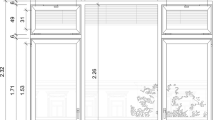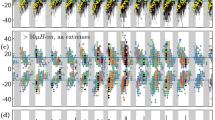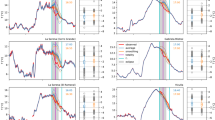Abstract
IN Mr. Buchan's objections to the hypothesis that the temperature of Greenwich is raised by the proximity of London one most important consideration has been omitted. Granted that the mean temperature of the summer months, June to September, is 0°.9 higher at Greenwich than at the eight other stations referred to, it does not follow that this alone is the cause of the higher average temperature at the former place. Greenwich occupies a position farther from the Atlantic and nearer the Continent than the majority of the selected stations, and we might therefore expect to find it subject not only to a higher temperature in summer, but also to a lower temperature in winter. If this be so, the excess which Mr. Buchan admits may be accounted for by the raising of the mean winter temperature from artificial causes; and this view of the case seem to be confirmed by observation. The station at Leyton, Essex, supplies the requisite data; for, although near London and rapidly increasing in population, it is, or rather was, in a country district when the observations were made. It is situated on the verge of Epping Forest, is separated from London by the Hackney Marshes, is rather more than 61/4 miles in a direct line from St. Paul's Cathedral, from which Greenwich is 43/4 miles distant, and is 7 miles nearly north of the last-mentioned place. The meteorological observations were undertaken with the express intention of comparing them with those at the Royal Observatory, with which object the instruments were mounted on a stand precisely similar to the Greenwich stand, and the exposure was unexceptionable. The comparison relates to the daily maximum and minimum temperatures for the three years ending November, 1863. The average was at Greenwich 50°.4, Leyton 49°.9. Allowing for elevation, the results are:—
This is a preview of subscription content, access via your institution
Access options
Subscribe to this journal
Receive 51 print issues and online access
$199.00 per year
only $3.90 per issue
Buy this article
- Purchase on Springer Link
- Instant access to full article PDF
Prices may be subject to local taxes which are calculated during checkout
Similar content being viewed by others
Author information
Authors and Affiliations
Rights and permissions
About this article
Cite this article
EATON, H. Greenwich as a Meteorological Observatory. Nature 16, 7–8 (1877). https://doi.org/10.1038/016007b0
Issue Date:
DOI: https://doi.org/10.1038/016007b0
Comments
By submitting a comment you agree to abide by our Terms and Community Guidelines. If you find something abusive or that does not comply with our terms or guidelines please flag it as inappropriate.



